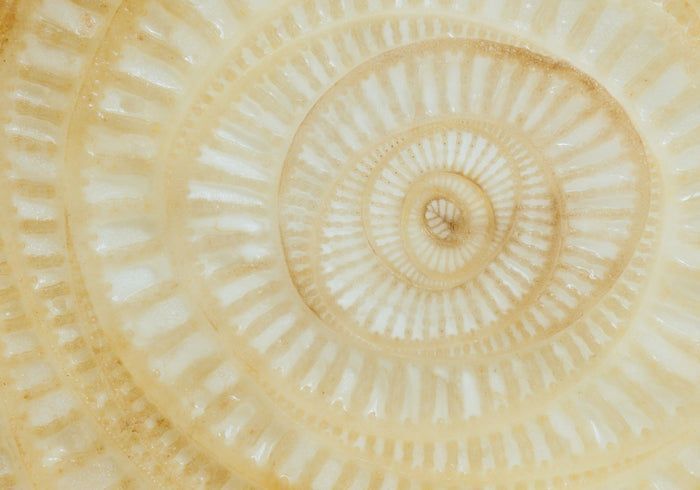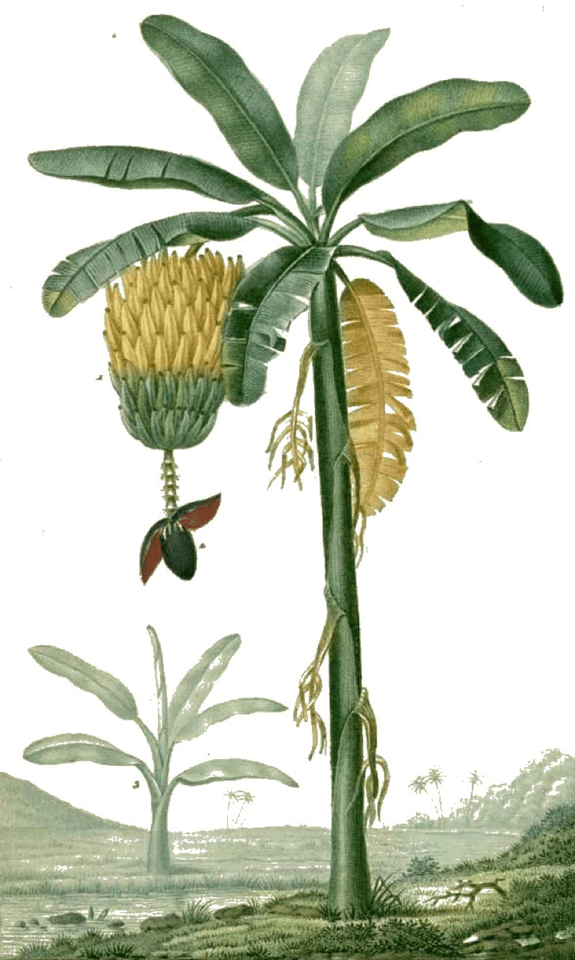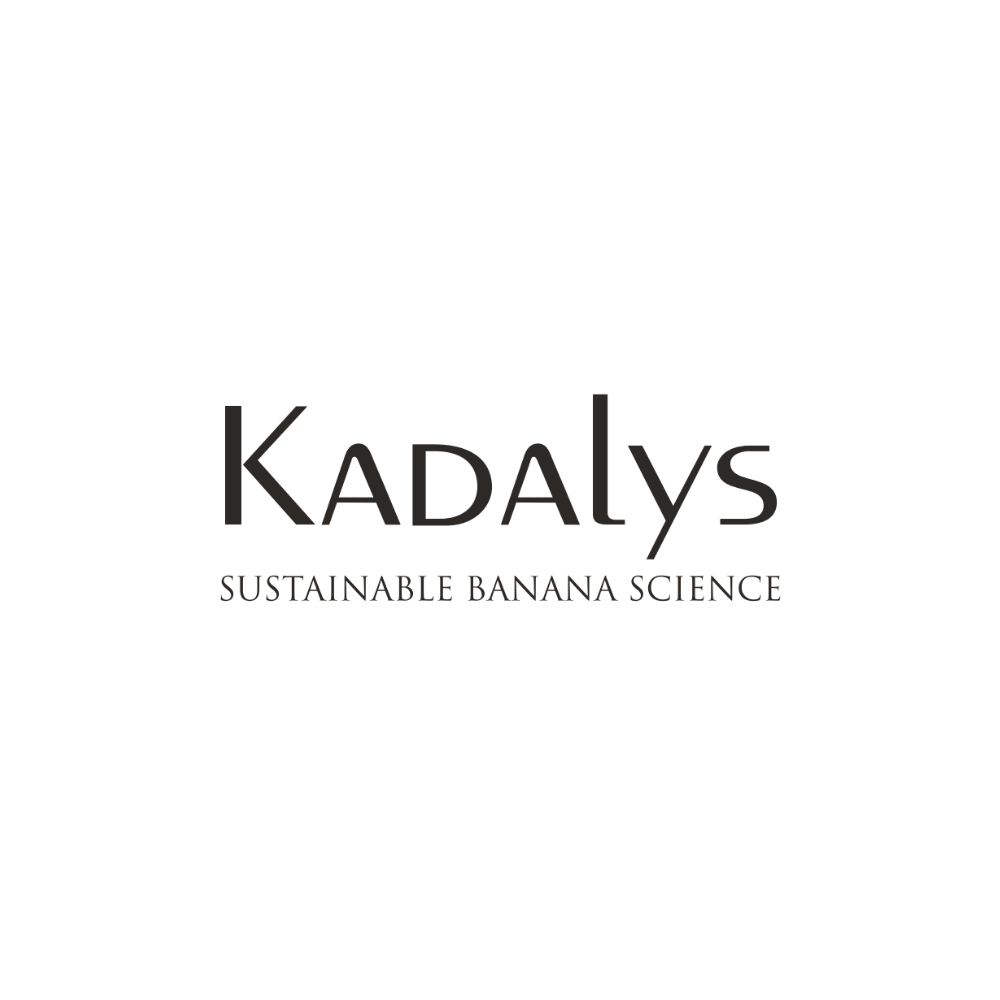WONDERFUL BANANA TREE
THE PLANT WITH A THOUSAND USES
A symbol of generosity, abundance and freedom, the banana tree is a reflection of our commitment.
Shirley Billot - CEO Kadalys

THE BANANA TREE, CENTRAL PLANT OF THE CREOLE GARDEN, IS A GENEROUS AND CARING HERB.
Its large leaves provide shade to neighboring species and encourage their growth. All parts of the banana tree have a phytotherapeutic function and utility.
Did you know?
The banana tree is not a tree, but a giant grass that can reach up to 15 meters high! By wrapping around each other, the leaves give rise to the “pseudo-trunk” which resembles the trunk of trees, but does not contain wood.
A SACRED PLANT
For millennia, the Banana Tree, kadali in Sanskrit, has accompanied the lives of men and nourished their imagination. In Hindu culture, it is a symbol of beauty, femininity and prosperity. He is notably considered the reincarnation of the goddesses Parvati, symbol of the loving wife, and Lakshmi, goddess of beauty. It is also one of the propitiatory species, ritual plants favoring the establishment of communication with the supernatural and invisible world. The banana tree is an offering plant because it symbolizes both abundance and fertility. In India, women desiring a male child worship him during the month of Kārtika.
A UNIQUE STORY IN MARTINIQUE
The banana tree dates from the Tertiary period. It originates from South Asia and has accompanied human life for millennia. During these journeys and through the intervention of man, it gradually lost its seeds. Early archaeological evidence of banana cultivation is found in Malaysia 3,000 BCE. It was in 1502 that the Portuguese brought the first banana trees from the Canary Islands to the Caribbean.
This plant has been with us for more than 300 years in Martinique where the royal order of September 7, 1736 required slave holders to plant 25 banana trees per slave held. Banana is authorized for cultivation by the slaves of Martinique on a plot of land who are now free to cultivate up to 50 feet of it.
At the beginning of the 20th century, banana cultivation took on its full dimension in Guadeloupe and Martinique. Indeed, after a cyclone ravaged coffee and cocoa crops, bananas seem much quicker to produce and offer an opportunity to farmers on our islands. After the sugar cane crisis in the 1960s, which led to the closure of many distilleries, bananas quickly became the islands' primary agricultural wealth.
A SUSTAINABLE CULTURE
The banana tree dates from the Tertiary period. It is native to South Asia and The banana is a sustainable crop, because it has no seasonality and is grown all year round. While the soil is left to rest, healthy plants from in vitro culture are grown in a greenhouse then planted in open fields. It takes approximately 9 to 12 months between planting the banana tree and harvesting its bunch, which then weighs, on average, 30 to 50 kg. From the 6th to 7th month, the flower appears.


Nicknamed “plant of a thousand uses”, this giant and benevolent herb holds a unique place in the traditional medicine of the French West Indies.
- Leaves : Directly applied to wounds, they have an antibiotic and healing action. In decoction with sugar, it is used to treat: colds, flu, coughs, hypertension and liver attacks. Heated, they are applied against rheumatism.
- Sap (latex) : Extracted by pressure from either the leaf seeds or the male bud, the sap (or latex) is used locally on superficial wounds. It stops bleeding and promotes healing.
- Flower: In decoction, it improves lactation and regulates the menstrual cycle of women. It also helps fight anemia by increasing the hemoglobin level in the blood.
- Roots: As a dewormer in the form of herbal tea, they have strong antifungal activity; folded they are applied locally against abscesses and adenitis; as a cough decoction.
- Green Banana : In powder form, it is an excellent source of probiotics. It promotes the reconstitution of the stomach lining. Ripe banana: In paste, it is applied locally against acne, bruises and oily skin. As a decoction, it is recommended against bronchitis, coughs and tracheitis.
- Yellow Banana : Rich in mucilage and healing.
- Pink Banana: Has an energizing effect when you are unwell.
THE BANANA TREE AROUND THE WORLD
The banana tree grows in warm and humid regions. It is essentially made up of water (80%). There are around a thousand species of bananas, and only two types of bananas: sweet bananas (or dessert bananas) and cooking bananas.
Different types of banana plants can produce very different fruits like pink colored bananas or even hairy bananas. Bananas grow in India, Bangladesh, Japan, southeast Asia, northern Australia, Africa, Central and South America and the West Indies (Martinique, Guadeloupe, etc.).
In China, there is a very rare banana tree "the Lotus banana tree" which produces a large and unique golden yellow flower whose flowering can last up to 9 months of the year. The Buddhists chose it as a sacred flower which they named the Golden Lotus for its astonishing resemblance to the lotus flower and its golden color.


